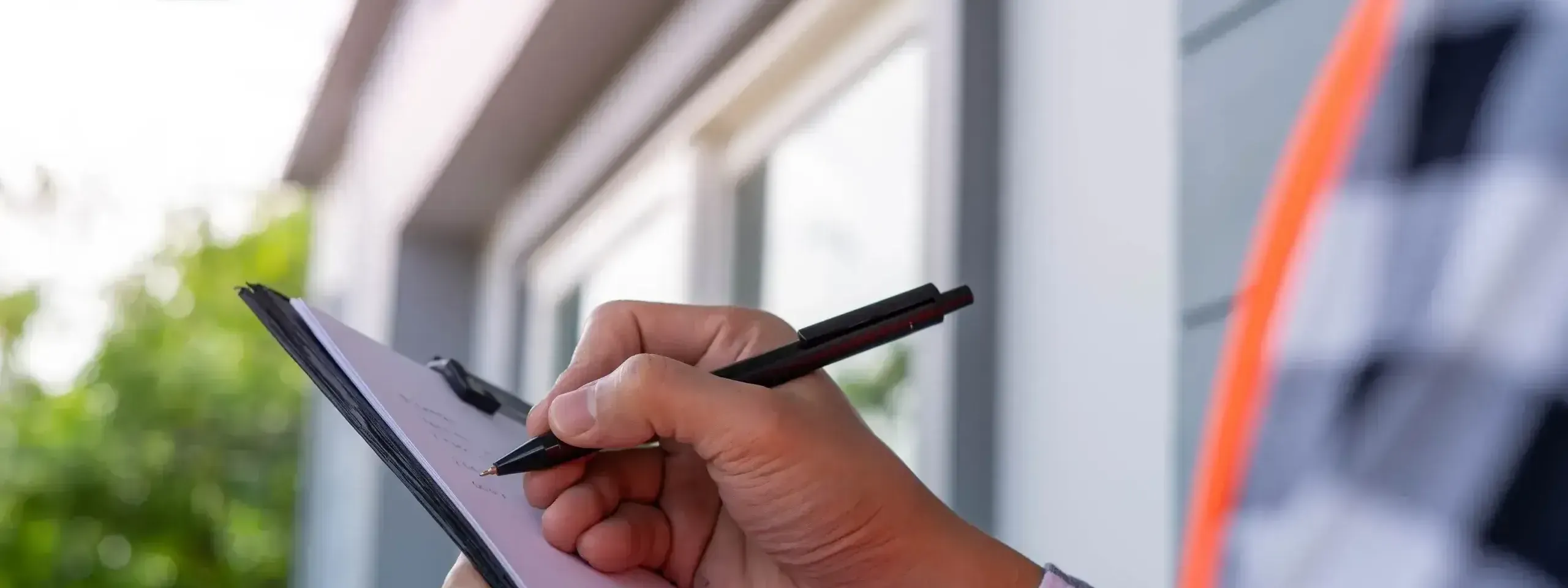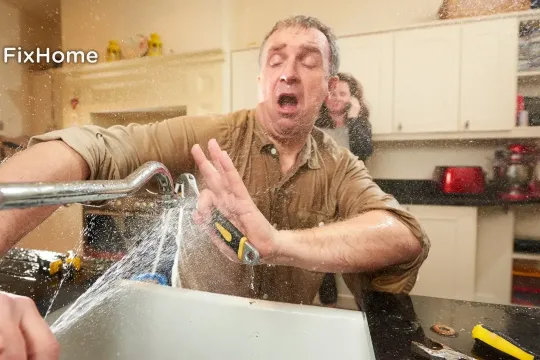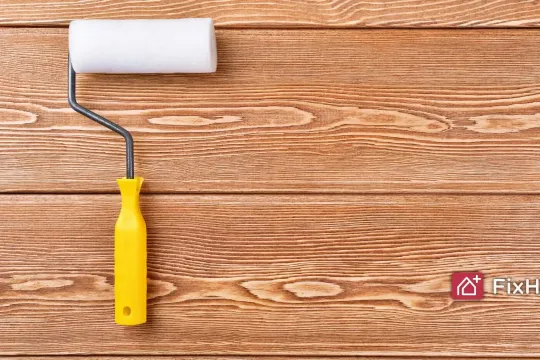Important Disclaimer: FixHome+ does not offer official home inspections. While it may be tempting to save money by relying solely on a handyman assessment, this is generally not recommended. Especially for real estate transactions or when dealing with serious structural concerns. Our handyman services complement, but do not replace, professional home inspections performed by licensed inspectors. For a comprehensive understanding of when each service is appropriate, please read this article.
Key Takeaways
- To find hidden problems and avoid expensive repairs, professional home inspections are crucial.
- Important warning indicators to take action include obvious cracks, water damage, sagging floors, old wiring, plumbing leaks, and roof damage.
- Inspections evaluate pest activity, HVAC performance, electrical safety, and structural integrity.
- For serious problems or real estate, licensed inspectors offer more thorough assessments than do handymen.
- Frequent handyman inspections can provide proactive maintenance solutions and handle minor issues.
- Investing in regular inspections lowers long-term costs, guarantees safety, and preserves the value of your house.
Quick Navigation:
1. Visible Cracks in Foundation or Walls
2. Water Damage or Persistent Moisture Issues
3. Sagging or Uneven Floors and Ceilings
4. Electrical Problems and Outdated Wiring
5. Plumbing Anomalies and Persistent Leaks
6. Roof Damage or Advanced Age
7. HVAC System Inefficiency or Failure
8. Unusual Odors or Indoor Air Quality Concerns
9. Pest Infestation Signs and Structural Damage
10. Recent Extreme Weather or Natural Events
When to Schedule a Professional Home Inspection
Who Should You Call for a Professional Home Inspection?
Is it Possible to call a Handyman Instead of an Official Property Inspection?
Protecting Your Investment: The True Value of Professional Home Inspections
Practical Solutions: When to Consider a Handyman Home Walk-Through
Your home is likely your biggest investment, and like any significant asset, it requires regular attention to maintain its value and ensure your family's safety. As a homeowner, recognizing when to call for a professional home inspection can save you thousands in unexpected repairs and provide crucial peace of mind. Whether you're experiencing mysterious symptoms of home distress or simply being proactive about maintenance, knowing the warning signs that warrant expert eyes is essential. Here are ten critical indicators that it's time to schedule a professional home inspection.
1. Visible Cracks in Foundation or Walls
When cracks appear in your foundation or walls, they're often telling you something important about your home's structural health. Not all cracks are cause for alarm, but certain types can indicate serious issues that require immediate professional assessment.
Difference Between Normal Settlement and Structural Issues
Hairline cracks less than 1/8 inch wide are typically the result of normal settling and rarely indicate serious structural problems. However, horizontal cracks in foundation walls, stair-step cracks in brick or block foundations, or cracks wider than 1/4 inch often suggest more significant structural movement that demands professional evaluation.
Homeowners often ignore small foundation cracks for years, which can lead to major structural repairs later. What might start as a minor fix early on can develop into a more than $10,000+ repair when left unchecked.
How Foundation Problems Affect Your Entire Home's Integrity
Foundation issues rarely exist in isolation. When your foundation shifts or cracks, the ripple effects can manifest throughout your home. From doors that no longer close properly to windows that stick, and even roof damage as the frame of your house shifts. A professional home inspection can identify not just the foundation issues themselves but also related damage that might otherwise go unnoticed.
During a comprehensive foundation assessment, professional home inspectors use specialized tools. They measure the severity of cracks, evaluate moisture patterns, and determine whether the movement is active or has stabilized. This level of detail is impossible to achieve through DIY assessment and provides crucial information for making informed repair decisions.
2. Water Damage or Persistent Moisture Issues
Water is concurrently essential for life and potentially devastating to your home's structure. Detecting and addressing moisture issues early through professional home inspection can prevent catastrophic damage.
Identifying Hidden Water Sources Behind Visible Damage
Water stains, peeling paint, bubbling wallpaper, or warped flooring are obvious signs of moisture problems, but the source isn't always apparent. Professional home inspectors use moisture meters and thermal imaging cameras to trace water intrusion to its source—often revealing problems hidden behind walls or beneath floors.
What may appear to be a minor ceiling stain can, in fact, indicate a significant roof leak causing progressive structural damage—sometimes for months before it's detected. Homeowners often dismiss such signs as old or inactive damage, not realizing the issue may be actively worsening.
Long-term Consequences of Untreated Moisture Problems
Beyond the immediate damage, persistent moisture creates the perfect environment for mold growth, wood rot, and even termite infestation. According to the Insurance Information Institute, water damage and freezing account for nearly 24% of all homeowners' insurance claims, with an average claim cost of $12,514 (2017-2021).
Professional home inspectors don't just identify existing water damage; they evaluate your home's water management systems—from roof gutters to foundation drainage—to prevent future problems. This proactive approach can save thousands in repair costs and protect your family's health from mold-related respiratory issues.

3. Sagging or Uneven Floors and Ceilings
When you notice a bedroom floor that slopes toward one corner or ceilings that appear to droop, your home is communicating structural concerns that warrant immediate professional inspection.
What Causes Structural Shifting in Homes
Several factors can lead to uneven floors or sagging ceilings:
- Foundation settlement or movement
- Water damage is weakening structural members
- Improper removal of load-bearing walls during renovations
- Undersized structural components in the original construction
- Termite or other wood-destroying insect damage
A thorough home inspection will identify which of these factors is affecting your property and guide appropriate remediation strategies.
Warning Signs of Joist or Support Failure
Before floors become noticeably uneven, subtle signs often appear. Creaking floors, doors that swing open or closed on their own, or cabinets pulling away from walls can all indicate structural movement that needs professional assessment.
In older homes, floor joists are frequently found to have been compromised by previous plumbing leaks. Homeowners often attribute the resulting floor bounce or unevenness to the "character" of the old house rather than recognizing it as a structural concern.
Professional home inspectors assess not just the symptoms but the structural systems themselves, examining crawl spaces, basements, and attics to evaluate joists, beams, and support columns. This comprehensive assessment provides a clear picture of your home's structural health.
4. Electrical Problems and Outdated Wiring
Electrical issues represent both a safety hazard and a sign that your home may need updating to meet current codes and demands.
Signs Your Home's Electrical System Needs Professional Evaluation
Watch for these warning signals that your electrical system requires inspection:
- Frequently tripping circuit breakers or blown fuses
- Flickering or dimming lights when appliances run
- Outlets or switches that feel warm to the touch
- Burning odors near electrical fixtures
- Two-prong ungrounded outlets throughout the home
- Lack of ground fault circuit interrupters (GFCIs) in wet areas
Electrical systems have a lifespan. Homes built before 1970 often have wiring that wasn't designed to handle today's electrical demands. The average home now has 45 electronic devices—a load these older systems simply weren't designed to support.
Safety Risks of Postponing Electrical Inspections
According to the National Fire Protection Association, electrical failures or malfunctions were the second leading cause of home fires in the United States between 2015 and 2019. A professional home inspection includes evaluation of your electrical panel, wiring, outlets, and fixtures to identify outdated components or safety hazards before they lead to fire.
During an inspection, professionals check for aluminum wiring, knob-and-tube systems, Federal Pacific Electric panels, and other known hazards that insurance companies often flag. Identifying these issues proactively can prevent insurance complications and, more importantly, protect your family from electrical fires.
5. Plumbing Anomalies and Persistent Leaks
Your home's plumbing system is largely hidden behind walls and under floors, making professional inspection essential for identifying issues before they cause significant damage.
Beyond DIY Fixes: When Plumbing Issues Indicate Bigger Problems
While a dripping faucet might be a simple fix, certain plumbing symptoms suggest more serious underlying issues:
- Low water pressure throughout the home
- Slow drains in multiple fixtures
- Water discoloration or unusual odors
- Gurgling sounds in pipes
- Water stains on ceilings or walls
- Unexplained increases in water bills
Professional home inspectors use specialized tools like video pipe cameras and acoustic leak detectors to examine plumbing systems beyond what's visible to homeowners. These technologies can identify issues like tree root intrusion into sewer lines, pipe corrosion, or hidden leaks before they cause catastrophic failures.
How Minor Leaks Lead to Major Structural Damage
A leaky pipe losing just one drop per second wastes about 2,000 gallons of water annually, according to calculations from the U.S. Geological Survey (USGS) drip calculator. However, the real concern isn't water waste—it's the progressive damage that small, undetected leaks cause to your home's structure.
That persistent small leak can saturate and rot floor joists, encourage mold growth, and even compromise your foundation over time. Professional home inspections include checking for signs of water intrusion and leakage in areas homeowners rarely see, like crawl spaces and utility closets, potentially saving thousands in structural repairs.

6. Roof Damage or Advanced Age
Your roof is your home's first line of defense against the elements, and signs of decline warrant immediate professional assessment.
Evaluating Your Roof's Condition: Beyond Missing Shingles
While obvious issues like missing shingles or visible sagging are clear indicators that your roof needs attention, other less obvious signs include:
- Granules from asphalt shingles collecting in gutters
- Curling or buckling shingles
- Moss or algae growth
- Daylight visible through the roof boards in the attic
- Water stains on attic rafters
- Excessive energy bills from heat/cooling loss
Professional home inspectors evaluate not just the roof covering but the entire roofing system, including flashing, ventilation, and underlying structure. This comprehensive assessment can identify issues that aren't apparent from ground level or to untrained eyes.
The Hidden Costs of Delaying Roof Inspections
The average cost to replace a roof is $6700-$11,500 by 2023 prices for asphalt shingles. However, when roof issues allow water to penetrate the structure, that cost can double or triple as repairs extend to attic insulation, ceiling drywall, and even electrical systems.
A professional home inspection can help you understand your roof's current condition and remaining lifespan. For homes with roofs over 15 years old, regular professional inspection becomes especially important, as most asphalt shingle roofs have a 20-25 year expected lifespan. Catching issues early can extend roof life and prevent the cascade of damage that occurs when roof failures go unaddressed.
7. HVAC System Inefficiency or Failure
Heating, ventilation, and air conditioning systems require regular professional assessment to maintain efficiency and prevent costly failures.
Performance Indicators That Signal Inspection Needs
Your HVAC system may need professional inspection if you notice:
- Uneven heating or cooling in different rooms
- Strange noises during system operation
- Frequent cycling on and off
- Excessive dust accumulation throughout the home
- Humidity issues (too dry or too humid)
- System age over 10 years without recent servicing
Professional home inspectors check not just the equipment itself but also the distribution system—ducting, vents, and registers—to ensure proper function. They can identify issues like leaking ducts (which can waste up to 30% of heating/cooling energy) or refrigerant problems that reduce system efficiency and lifespan.
Energy Bills as Warning Signs of System Issues
Many homeowners don't realize that a spike in utility bills often signals HVAC problems. A system working harder than necessary to maintain temperature increases electricity usage dramatically, while also shortening equipment life.
During a home inspection, professionals can assess the age, condition, and efficiency of your HVAC equipment. For systems nearing the end of their lifespan—typically 15-20 years for furnaces and 10-15 years for air conditioners—inspections can help you plan ahead. This way, you can avoid emergency failures, which often happen on the hottest or coldest days when the system is needed most.
8. Unusual Odors or Indoor Air Quality Concerns
Strange smells in your home are more than just unpleasant—they're often indicators of issues that require professional inspection.
Identifying Sources of Problematic Odors in Your Home
Different odors signal different potential problems:
- Musty or earthy smells typically indicate mold or mildew
- Rotten egg odors may signal gas leaks in some circumstances
- Sewage smells often indicate plumbing vent issues or drain problems
- Persistent "dirty sock" odor from vents suggests HVAC mold
- Chemical or pungent odors might indicate pest control residues or VOCs from building materials
Professional home inspectors are trained to identify these odors and trace them to their sources. Using specialized equipment like moisture meters, gas detectors, and thermal cameras, they can locate problems hidden within walls, under floors, or in inaccessible areas.
Health Implications of Poor Indoor Air Quality
We spend approximately 90% of our time indoors, where air pollutant levels can be 2-5 times higher than outdoor levels. Poor indoor air quality has been linked to allergies, asthma, fatigue, and even cognitive impairment, according to the EPA and organizations like the World Health Organization (WHO).
A comprehensive home inspection includes assessment of ventilation systems, moisture management, and potential pollutant sources. Inspectors look for proper exhaust fan function, adequate fresh air intake, and signs of mold, pest infestation, or other indoor air quality concerns—providing recommendations for remediation strategies when needed.
9. Pest Infestation Signs and Structural Damage
Unwanted pests can cause significant structural damage, requiring professional assessment and remediation.
Recognizing Evidence of Unwanted Visitors in Your Home
Watch for these warning signs that pests may be affecting your home:
- Small holes in wood structural elements
- Sawdust-like material (frass) near wood components
- Hollow-sounding wood when tapped
- Mud tubes on foundation walls (termites)
- Scratching sounds in walls or ceilings
- Nests in attics or crawl spaces
Many homeowners miss early signs of pest activity because it often begins in rarely visited areas like crawl spaces, attics, or inside walls. Professional home inspectors are trained to recognize evidence of termites, carpenter ants, rodents, and other pests that can damage home structures.
How Pests Compromise Structural Integrity
Termites cause approximately $5 billion in property damage annually in the United States, according to the National Pest Management Association (NPMA). Unlike fire or water damage, pest damage is rarely sudden—it's a progressive decline that often goes unnoticed until structural integrity is significantly compromised.
During a home inspection, professionals check vulnerable areas for signs of active infestation and previous damage. They can distinguish between old, inactive damage and ongoing problems requiring immediate attention. This assessment helps homeowners understand both current pest control needs and any structural repairs necessary to restore integrity.
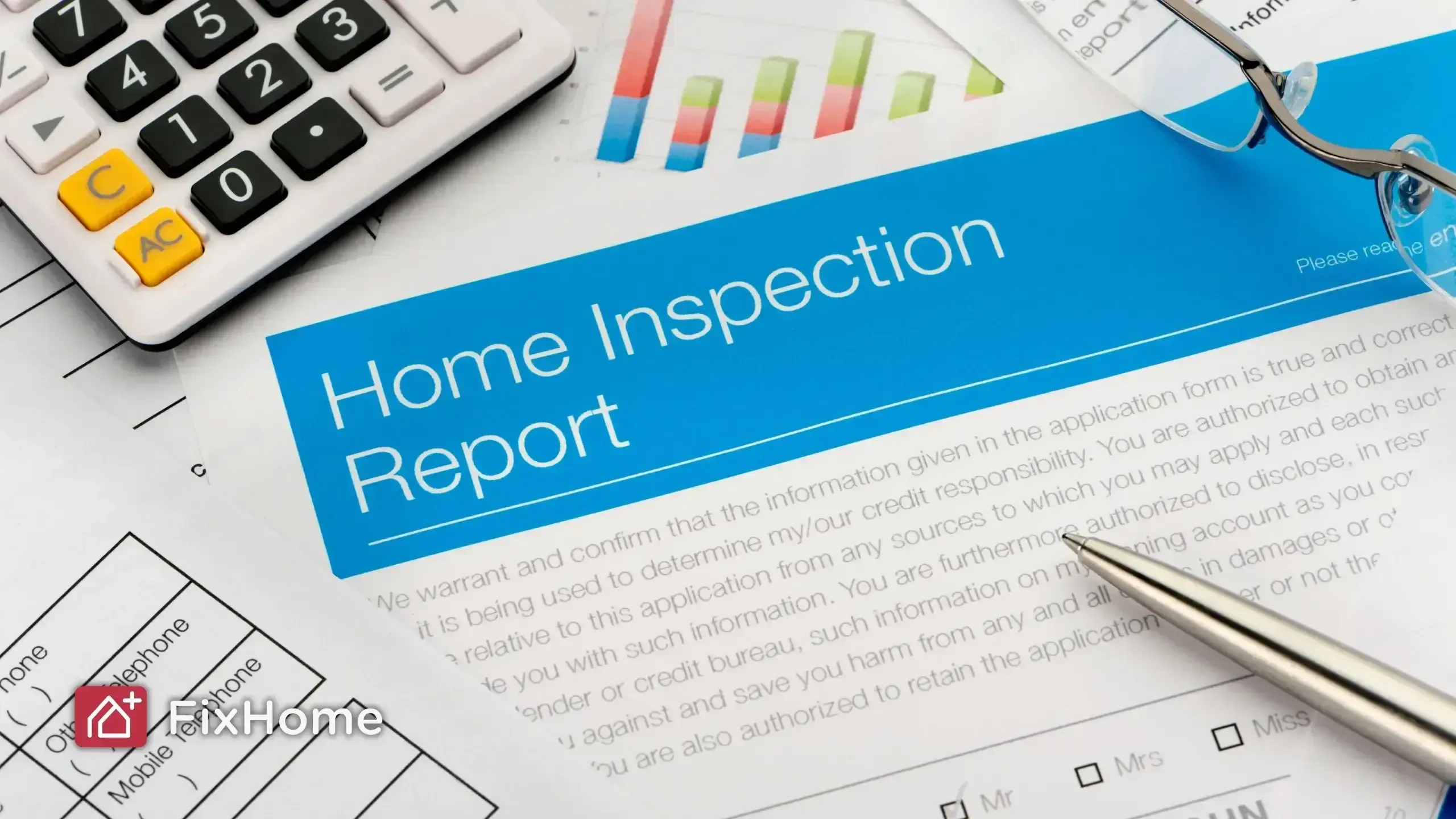
10. Recent Extreme Weather or Natural Events
After severe weather events, professional home inspection becomes particularly important to identify damage that may not be immediately apparent.
Post-Storm Inspection Priorities
Following severe weather, professional inspectors focus on:
- Roof integrity and potential water entry points
- Foundation movement from flooding or soil saturation
- Electrical system safety if water intrusion occurred
- Structural components stressed by wind, snow loads, or ground movement
- Moisture infiltration in walls, ceilings, and insulation
Even seemingly minor events like heavy rainstorms can reveal weaknesses in aging homes. Professional inspection after weather events isn't about finding obvious damage—it's about identifying the subtle beginnings of problems that will worsen over time.
Subtle Damage That Homeowners Often Miss After Weather Events
While homeowners often check for obvious damage like broken windows or missing shingles after storms, professional home inspectors look deeper for issues like:
- Attic leaks that haven't yet penetrated ceiling drywall
- Shifted foundation elements from soil expansion/contraction
- Damaged flashing around roof penetrations
- Moisture in wall cavities that hasn't surfaced to visible areas
- Microfractures in plumbing from freezing events
These subtle issues, if left unaddressed, often develop into significant problems months or years after the weather event. Professional home inspection provides documentation of condition that can be valuable for insurance.
When to Schedule a Professional Home Inspection
Beyond responding to warning signs, there are specific life events and circumstances when professional home inspections are particularly valuable or even essential. Understanding these scenarios helps you make informed decisions about property inspection timing.
Buying a House - Ordered by Buyer
When purchasing a home, a professional inspection is your best defense against unexpected expenses and safety concerns. As a buyer, ordering a thorough home inspection before finalizing your purchase gives you the power to:
- Verify the true condition of the foundation, roof, interior rooms, plumbing, electrical, heating, and ventilation systems
- Detect hidden defects that aren't visible during casual viewings
- Negotiate repairs or price adjustments based on documented issues
- Exercise contingency clauses to withdraw from the deal if serious problems are discovered
- Plan for future home maintenance and budget for necessary repairs
Studies show that 86% of home inspections identify at least one issue needing attention, with the average inspection finding 5-10 significant concerns. This critical step in the home buying process typically costs $300-$500—a small investment compared to the potential for thousands in unexpected repairs after purchase.
Selling a Home - Ordered by Seller
While buyers traditionally order inspections, proactive home sellers increasingly conduct pre-listing inspections to:
- Identify and address minor problems before they derail negotiations
- Set realistic pricing that accounts for the home's true condition
- Provide transparency that builds buyer confidence
- Minimize surprise renegotiations during the closing process
- Market the home as "pre-inspected" to stand out in competitive markets
According to the National Association of Realtors, homes with pre-listing inspections tend to sell faster. They also have fewer contract cancellations or delays (5-7% of contracts were delayed due to appraisal issues). The upfront investment in addressing identified issues often returns multiples in the final sale price and reduced time on market.
After Severe Weather Events - Initiated by Homeowner
Following significant weather events—hurricanes, tornadoes, floods, hailstorms, or even prolonged extreme temperatures—professional inspection becomes essential to:
- Identify roof damage that may lead to leaks and moisture infiltration
- Detect water intrusion in walls that could foster mold growth
- Assess foundation stability after flooding or ground saturation
- Evaluate the electrical system safety if water entered the home
- Document damage for insurance claims and repair planning
After the 2023 Illinois flooding, dozens of homes where owners believed they had escaped damage were inspected. In a big part of these supposedly unaffected homes, moisture was found in wall cavities that would have led to significant mold issues if left unaddressed.
After Reconstruction or Redevelopment Projects
Whenever significant work has been performed on your home, professional inspection provides:
- Verification that contractors completed work according to specifications
- Confirmation that all systems were properly integrated with existing structures
- Assurance that building codes and safety standards were met
- Documentation of the home's condition for warranty purposes
- Peace of mind that no critical details were overlooked
Even with reputable contractors, oversight happens. In a recent study of post-renovation inspections, over 30% revealed issues requiring correction—from improper electrical connections to inadequate ventilation in newly created spaces.
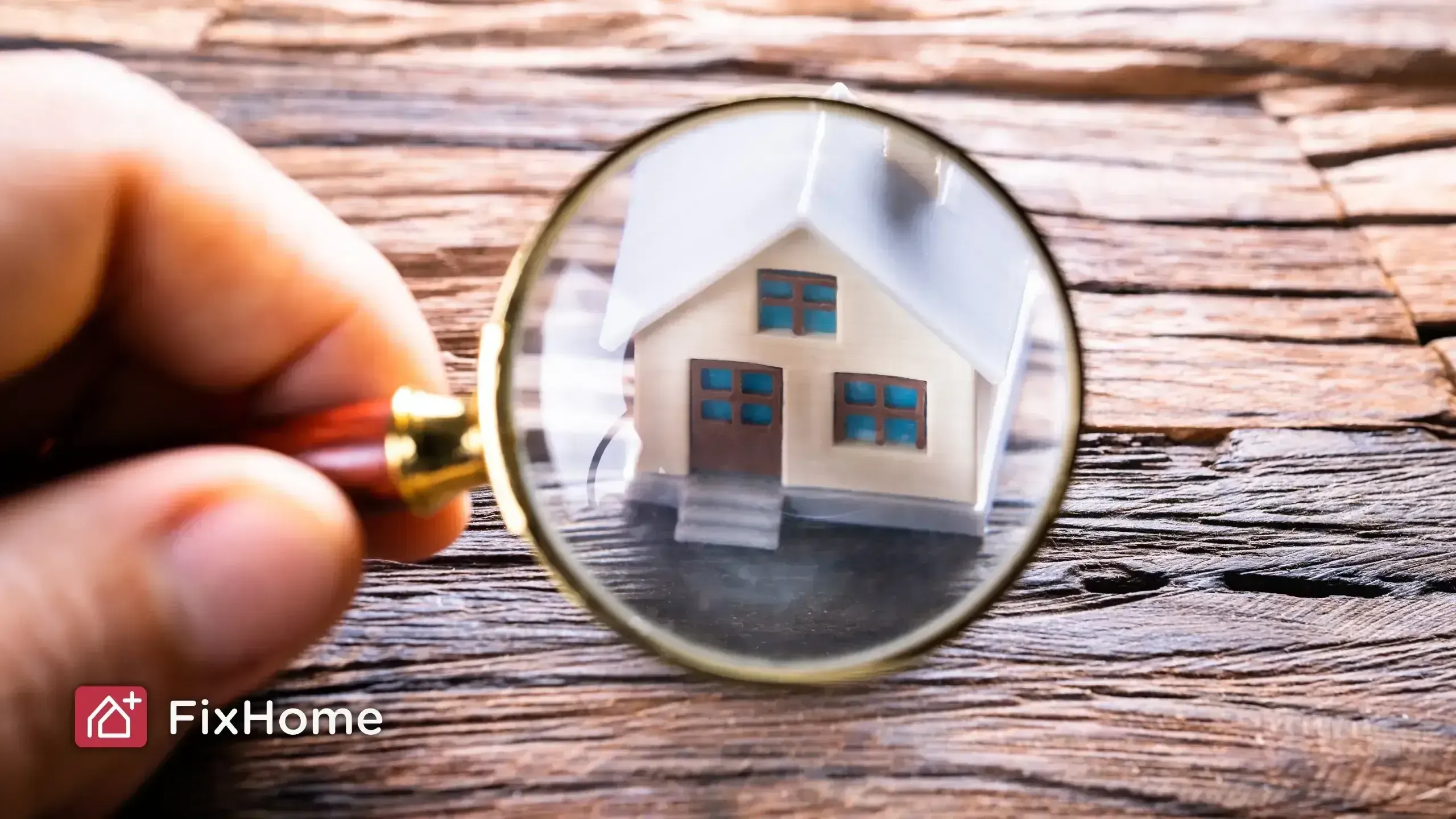
Who Should You Call for a Professional Home Inspection?
Selecting the right professional for your home inspection ensures you receive accurate, comprehensive information about your property's condition.
Understanding Qualifications and Certifications of Home Inspectors
When seeking a qualified home inspector in Illinois, look for these important credentials:
- State licensing (required in Illinois since 2002), regulated by the Illinois Department of Financial and Professional Regulation (IDFPR)
- Membership in professional organizations like the American Society of Home Inspectors (ASHI) or the International Association of Certified Home Inspectors (InterNACHI)
- Proof of liability insurance and errors & omissions coverage (first one required; second recommended but not mandatory)
- Specialized certifications for radon testing, mold assessment, or commercial inspections, if relevant to your needs
- Continuing education compliance (Illinois requires 12 hours every two years)
The difference between a minimally qualified inspector and a highly trained one can be dozens of overlooked issues. Certifications and continuing education demonstrate a commitment to professional standards that directly impact home inspection quality.
Finding a Reputable Inspector in Illinois
To locate and evaluate the right home inspectors:
- Request recommendations from real estate agents (but avoid those with potential conflicts of interest)
- Check online reviews specifically mentioning thoroughness and attention to detail
- Ask about experience with homes similar to yours in age and construction type
- Review sample inspection reports to gauge the depth and clarity of documentation
- Inquire about inspection duration (thorough inspections of average homes typically take 2-3 hours)
- Verify that the inspector encourages client attendance during the inspection
Professional home inspectors in Illinois must follow standards established by the Illinois Home Inspector License Act, which sets minimum requirements for inspection procedures and reporting. However, the most reputable inspectors exceed these minimums, providing detailed reports with photographs, maintenance recommendations, and clear explanations of findings.
Is it Possible to Call a Handyman Instead of an Official Property Inspection?
In today's cost-conscious environment, homeowners sometimes consider using handyman services instead of licensed home inspectors. Understanding the significant differences between these options is crucial.
Definitely Not for Real Estate Transactions
For real estate transactions, substituting a handyman for a licensed inspector is strongly inadvisable because:
- Illinois law requires inspectors performing pre-purchase inspections to be licensed by the Department of Financial and Professional Regulation
- Mortgage lenders typically require inspections by licensed professionals
- Home insurance providers may dispute claims if problems were missed during an unlicensed inspection
- Legal protections available through licensed inspectors (errors & omissions insurance) aren't available with handymen
- Most handymen lack the specialized equipment needed for thorough assessment ( sewer scope, moisture meters, thermal cameras, gas detectors, etc.)
Under Illinois law, only licensed home inspectors can legally perform pre-purchase inspections. Using an unlicensed handyman violates state law and may invalidate inspection contingencies in your contract.
When a Handyman Walk-Through Might Be Appropriate
While a handyman assessment is never sufficient for real estate transactions, it might be appropriate in limited circumstances:
- For general maintenance, when you plan to remain in your current home
- To get rough estimates for repair budgeting (though specific contractor quotes will still be needed)
- For superficial evaluations of individual systems between comprehensive inspections
- When addressing specific, already-identified issues rather than seeking unknown problems
Handymen typically specialize in repairs rather than diagnostics and may miss subtle indicators of serious problems. However, it is important to note that experience and equipment can influence the quality of a handyman’s assessment. Those with extensive backgrounds across diverse project types and access to more advanced tools may be better equipped to detect hidden or emerging issues.
Protecting Your Investment: The True Value of Professional Home Inspections
When considering the cost of professional home inspection services, it's important to recognize their value in protecting both your financial investment and your family's safety and comfort.
Safety and Integrity Through Prevention
Professional home inspections provide invaluable benefits:
- Identifying small issues before they become expensive emergencies
- Creating documentation of home conditions for insurance and warranty purposes
- Providing expert guidance on maintenance priorities specific to your property
- Establishing baseline condition assessments for future reference
- Reducing anxiety about unknown home issues
The average home inspection cost ($300-$500) pales in comparison to the potential savings. According to HomeAdvisor, emergency repairs typically cost 30-50% more than planned maintenance, making regular inspections a sound financial strategy.
Making Informed Decisions About Your Property Physical Condition
Beyond immediate problem identification, professional home inspections empower you with information to:
- Develop accurate maintenance budgets based on your home's specific needs
- Prioritize improvements that enhance both safety and property value
- Make informed decisions about when to repair versus replace aging systems
- Understand the expected lifespan of major components like roofing, HVAC, and appliances
- Document home improvements and maintenance for future resale value
Investing in regular professional home inspections is key to protecting your property's value. These inspections are typically recommended every 3-5 years for occupied homes and before or after major life events. When those ten warning signs appear, responding promptly with a professional assessment isn't just responsible homeownership; it's smart financial management.
Practical Solutions: When to Consider a Handyman Home Walk-Through
This article covers general warning signs. For official real estate inspections, consult a licensed home inspector.
For maintenance issues, our handyman team can help. When you notice any of the warning signs mentioned above but aren't yet ready to schedule a licensed inspection, a practical first step may be a handyman check-up. FixHome+ offers routine maintenance visits in the Northwest Chicago suburbs, helping homeowners review visible conditions, catch developing issues early, and plan next steps with confidence.
This is a cheaper alternative if you just want to understand the condition of the house for yourself. A kind of prevention without a reason, or if the problem is minor or cosmetic.
For example, moisture in the basement, poor water pressure, doors that do not close, creaking floors, etc. A FixHome+ handyman will not only notice this but can also immediately fix the problem on the spot, without the need to call an inspector. We will also remind you about the package service, so the detection during a handyman walk-through actually costs $0 extra.
More from our blog.
Discover more insightful and engaging content from our blog.
